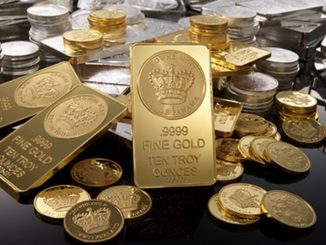
Anonimski, CC0, via Wikimedia Commons
It is undeniable that the ongoing crisis in Ukraine has polarized Western societies to an extent unseen in decades in any other foreign conflict. For over a month, we have been bombarded unceasingly by all mainstream media sources with reports and stories about Russia’s invasion and this conflict has already created deep social rifts in many other nations, and EU members in particular. No matter where one stands on this topic and no matter how passionate one might feel about it, I believe we can all agree that Western media has been far from unbiased in reporting relevant developments from the front. Neither has Russia state media naturally, as we might have expected, especially in the context of an ongoing conflict.
This considerable “gap” between the two versions of reality presented and propagated by the opposing sides creates a heavily contorted and skewed understanding of events in the minds of most citizens and voters, which in and of itself is extremely dangerous and can very easily dim the hopes for a swift and peaceful resolution. But it is also dangerous for investors, especially for those of us who understand the importance of geopolitical dynamics and shifts. There are essential pieces of information and consequential developments that most Western investors and ordinary savers are not being fully and accurately apprised of.
One such story, that I found to be very interesting and shockingly underreported, was the announcement by the Russian central bank on March 25, that it would buy gold at a fixed price of 5,000 roubles a gram until June 30. Prior to this announcement, the Russian Ruble had dropped to record lows against the U.S. dollar, due to concerns about the heavy sanctions imposed by NATO allies. However, as a result of the decision to peg the currency to gold, the rouble saw a remarkable rebound, quickly returning to pre-invasion levels. Soon thereafter, on April 8, the Russian central bank announced that it would scrap its previous plan of buying gold at a fixed price from local banks and instead it will continue buying at a “negotiated price”, because of a ”significant change in market conditions”.
Now, if we could put political convictions, sentiments and affiliations aside for a moment and we look at this story objectively, there are quite a few important signals that we can separate from the noise. For one thing, the initial announcement to essentially peg the rouble to gold, in response to the free-fall it suffered as a result of the sanctions, clearly shows that everyone, even central bankers, still understand very well the trust that the market has in the yellow metal.
The scheme obviously worked, as expected, and the boost that the currency received provided further confirmation of what long-term gold investors always knew. Given the fact that fiat money is backed by nothing but faith in the government, when that faith crumbles, so does the perceived value of the pieces of paper that it printed. When faced with such a crisis, that can and has in the past proved to be existential, the State, any state, quickly turns to the same safe haven, and the trust it inspires, as any other investor.
Furthermore, the second announcement of the Russian central bank, to reverse its initial stance, also speaks volumes to investors who understand both monetary history and the dynamics of the current system. Even though Russia is one of the world’s biggest gold producers, no State under this system could afford, or would politically risk, to “tie the hands” of its central bank.
Pegging any fiat currency to gold would immediately put an end to all the reckless money printing operations and all the populist fiscal policies we’ve grown accustomed to. Especially in times of actual conflict, this would be very dangerous politically, not just for the Russian government, but for virtually every other political establishment on the planet too.
For precious metals investors, this entire affair clearly serves as yet another confirmation of the essential role that gold plays, in particular in times of crisis. And especially as Western citizens, after having been told by central bankers and politicians for decades that gold is a useless rock and a “barbarous relic”, the lesson here is even more important: “Do as they do, not as they say”.
This article has been published in the Newsroom of pro aurum, the leading precious metals company in Europe with an independent subsidiary in Switzerland.
This work is licensed under a Creative Commons Attribution 4.0 International License.



